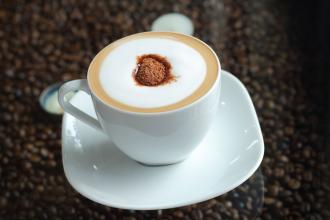Introduction to the characteristics of Panamanian Kasha Coffee Flavor Manor with Citrus and Flower aroma
The Panamanian flag was launched on November 3, 1904. The flag is rectangular and the ratio of length to width is 3:2. The flag consists of four rectangles of white, red and blue. White symbolizes peace; red and blue represent the former Panamanian Liberal Party and the Conservative Party respectively, and they are also symbols of the two parties' United struggle for the interests of the nation. The blue star on the white background at the top left represents loyalty and integrity, while the red star on the white background at the lower right represents the authority of the law. The design of the crosshairs divided into four pieces represents that Panama is located at the junction of South America, North America, Atlantic and Pacific Ocean. Red, blue and white are the colors of the American Stars and Stripes that support the independence of Panama. The national flag was designed by Manuel Amador Guerrero, the first president of Panama, and the current constitution of Panama entered into force on October 11, 1972, after four amendments in 1978 and 1983, 1994 and 2004. The Constitution stipulates that the three powers of the state are separated and that the President is the head of state and shall be elected by direct election for a term of five years without re-election, but may run for another term. On October 4, 1994, the Pakistani parliament stipulated the abolition of the army and the establishment of a police force. In October 2004, the Constitution made another important amendment, requiring the National Assembly to change its name to the "National Assembly"; the Constituent Assembly as the third way to amend the Constitution; and to abolish the post of Vice President. Members are free to nominate for the election, and each member retains only one alternate member. The current government of Panama was formed on July 1, 2009. the main members are: vice President Juan Carlos Varela, Minister of the Presidential Office Jimmy Papadimitriu, Foreign Minister Fernando Nunez Favre, Minister of the Interior Jorge Ricardo Favre, Minister of Public Security Jose Raul Murino Minister of economy and Finance Frank George de Lima, Minister of Commerce and Industry Ricardo Quijano, Minister of Agriculture and Animal Husbandry Development Oscar Armando Osorio Kassar, Minister of Health Javier Diaz, Minister of Housing Yasmina Pimentel (female), Minister of Labour Armah Lorena Cortez (female), Minister of Social Development Guillermo Ferrufino Minister of Education Lucy Molina (female), Minister of Public works Jaime Ford, Minister of small and medium Enterprises Heathrow Brillo (female), Minister of Canal Robert Roy, Minister of Tourism Salomon Samin main Revolutionary Party: the second largest party and the largest opposition party in the country. It was founded on the initiative of General Torrijos in 1978 and was formally established on March 11, 1979. There are now 472000 party members. President Benicio Enacio Robinson. General Secretary Juan Carlos Navarro.
Panamanian Party: the third largest party in Pakistan. Formerly known as the Arnulfo Party. It split from the True Panamanian Party in August 1988 and was formally established in October 1991. It was changed to its current name in January 2005. There are now 257000 party members. In January 2009, he joined Martinelli's Alliance for change to take part in the general election. In August 2011, the alliance with the Democratic change Party broke down. President Juan Carlos Varela, General Secretary Alcibiades Vazquez Velazquez
Panama is a small country located in the center of the American continent. The waters of the Atlantic and Pacific oceans flood its beaches.
Panama is located at 9 degrees north latitude, the meeting point of the Central Mountains, where Mount Baru, one of the highest volcanoes in Central America, is located.
The Baru volcano has an altitude of more than 11400 feet, and the land around it is rich in nutritious and fertile soil, providing sufficient conditions for the sowing and cultivation of coffee endemic to Panama.
The appropriate microclimate, soil, temperature and height of these highlands are suitable for sowing, planting and harvesting a variety of unique coffees. These coffees have jasmine, citrus, ripe fruit, berries, caramel, special sweetness, vanilla, chocolate and other flavors.
Unique coffee
Panamanian coffee is classified and numbered into small batches, which are designed to have a small capacity for optimal management, and classification numbers allow buyers to understand and track the entire process.
Because of its small quantity, Panamanian coffee products are based on special coffee. The country provides its high-quality products to specialized stores around the world, such as Denmark, Britain, Greece, Norway, Sweden, South Korea, Japan, Taiwan Province of China and Panama in the United States. The geographical advantage is that it has many distinctive microclimate areas suitable for growing coffee, and Panama also has a lot of persistent and professional coffee growers. This means there will be a lot of very good coffee in Panama, but these coffees are often associated with high prices.
The high price of coffee in Panama is mainly caused by the following factors:
Land price: for the people of North America, they very much want to buy a stable and beautiful land at a low price. Panama is such a place;
More farmers in Panama grow coffee for export in the name of manors to emphasize their own manors;
Panamanian labor law has higher requirements for labor employment, so the coffee industry has to pay higher wages, which has to be paid by consumers.
Esmeralda Manor
When it comes to coffee prices, we should pay great attention to a manor in Panama, and it can even be said that so far, no other single estate has had such an impact on coffee farming in Central America. This is Esmeralda Manor, which belongs to and is run by the Peterson family.
This estate has led to the cultivation of "Geisha" in many coffee plantations not only in Panama but also throughout Central America. For many coffee farmers, this variety means a high price, and to a large extent, this perception is correct. Because as a manor that grows "Geisha", the price of its coffee is always higher than that of other estates.
Traceability of origin
Panamanian coffee has high traceability of origin. Generally speaking, the origin of coffee in Panama can be traced to a single manor or even to a field on the manor.
Flavor characteristics
The better coffee in Panama has citrus and floral aromas, bright taste, elegant and complex flavor.

Important Notice :
前街咖啡 FrontStreet Coffee has moved to new addredd:
FrontStreet Coffee Address: 315,Donghua East Road,GuangZhou
Tel:020 38364473
- Prev

Introduction to the flavor and taste of Mexican Aldumara coffee manor with strong sweetness
The Teotihuacan civilization (Teotihuacn) began around 200 BC, about in the middle of what is now Mexico, and was born after the demise of the Olmec civilization, about the same time as the Mayan civilization. the Teotihuacan built a city with a population of about 50, 000 between the first year of AD and 150, making it the earliest city in the entire American region.
- Next

Introduction to boutique coffee beans in manor area with fragrant Jamaican coffee flavor
In the decades after 1872, Jamaica's economy gradually prospered, but its social and cultural development was always suppressed by the colonial authorities. Especially during the Great Depression, all walks of life in Jamaica were very dissatisfied with the depressed social situation. In 1938, workers in Jamaica revolted. After that, the colonial authorities were forced to grant local autonomy. In 1944, the first of Jamaica
Related
- Detailed explanation of Jadeite planting Land in Panamanian Jadeite Manor introduction to the grading system of Jadeite competitive bidding, Red bid, Green bid and Rose Summer
- Story of Coffee planting in Brenka region of Costa Rica Stonehenge Manor anaerobic heavy honey treatment of flavor mouth
- What's on the barrel of Blue Mountain Coffee beans?
- Can American coffee also pull flowers? How to use hot American style to pull out a good-looking pattern?
- Can you make a cold extract with coffee beans? What is the right proportion for cold-extracted coffee formula?
- Indonesian PWN Gold Mandrine Coffee Origin Features Flavor How to Chong? Mandolin coffee is American.
- A brief introduction to the flavor characteristics of Brazilian yellow bourbon coffee beans
- What is the effect of different water quality on the flavor of cold-extracted coffee? What kind of water is best for brewing coffee?
- Why do you think of Rose Summer whenever you mention Panamanian coffee?
- Introduction to the characteristics of authentic blue mountain coffee bean producing areas? What is the CIB Coffee Authority in Jamaica?

